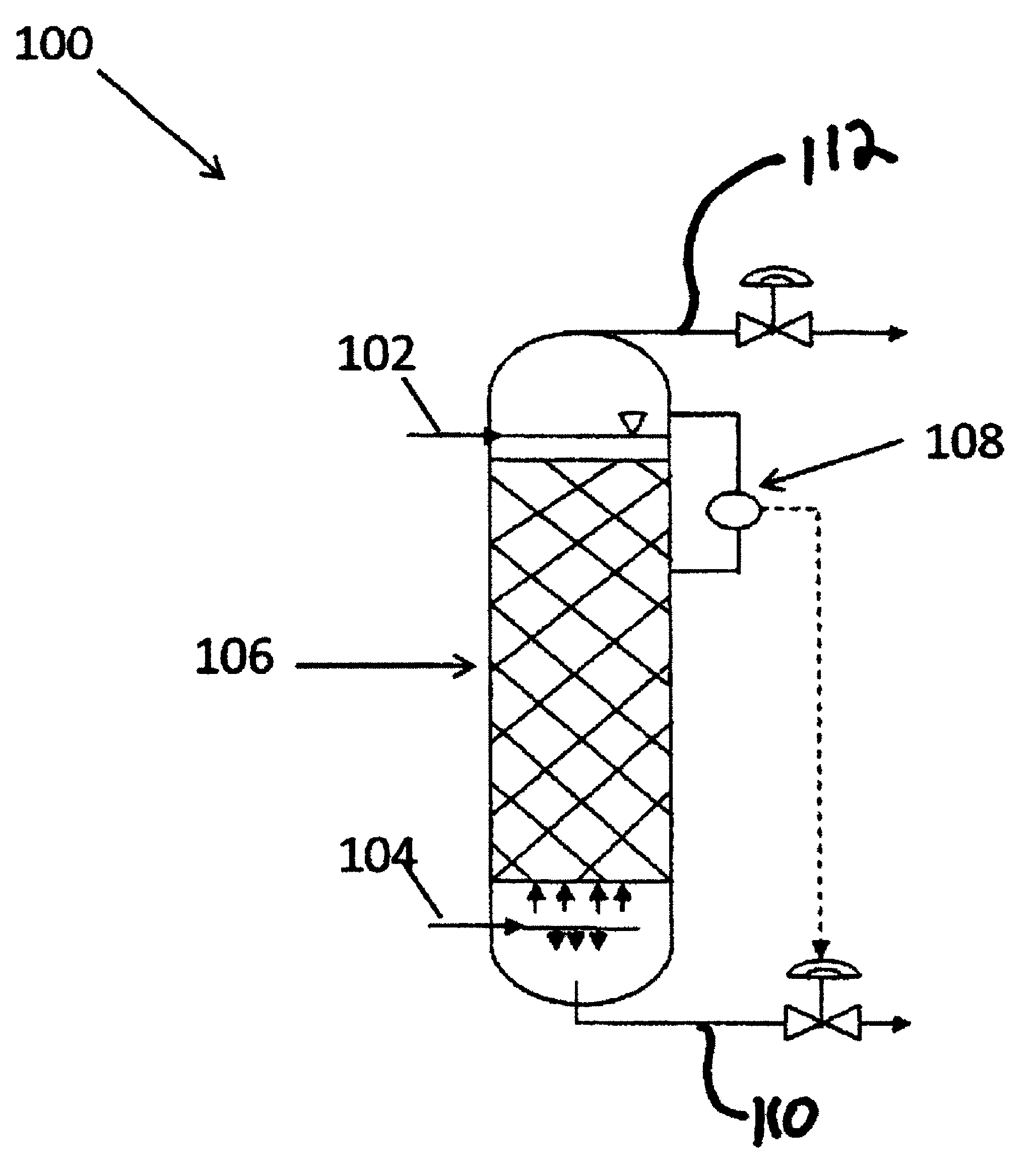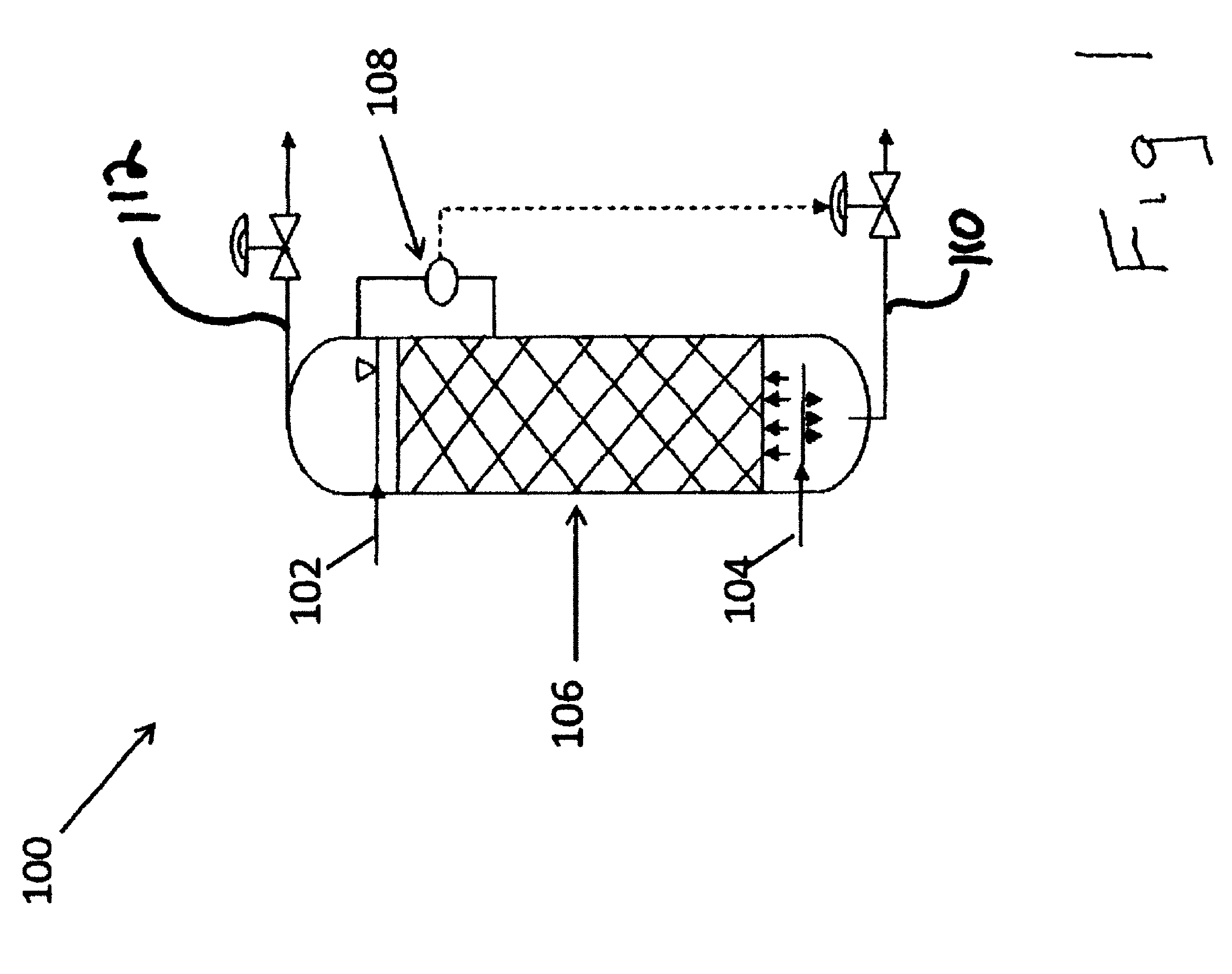Reactor, a retained catalyst structure, and a method for improving decomposition of polysulfides and removal of hydrogen sulfide in liquid sulfur
a technology of retaining catalyst and liquid sulfur, which is applied in the direction of metal/metal-oxide/metal-hydroxide catalyst, machine/engine, etc., can solve the problems of toxicity of hydrogen sulfide, high safety risks, and difficult handling of liquid sulfur produced by the claus process, so as to so2, and reduce the formation of h2o.
- Summary
- Abstract
- Description
- Claims
- Application Information
AI Technical Summary
Benefits of technology
Problems solved by technology
Method used
Image
Examples
Embodiment Construction
[0023]Provided is a method and system for further decreasing combined polysulfides and hydrogen sulfide content in liquid sulfur, having reduced corrosive by-products. Embodiments of the present disclosure reduce combined polysulfides and hydrogen sulfide content in liquid sulfur to levels desirable to meet environmental restrictions and produce fewer corrosive by-products by utilizing inert gas or a low oxygen-containing gas.
[0024]Referring to FIG. 1, an embodiment of the present disclosure includes a reactor 100 having a first inlet 102 for a first stream including liquid sulfur containing polysulfides and dissolved hydrogen sulfide, a second inlet 104 for a second stream of an inert gas or low oxygen-containing gas, and a region 106 for contacting the first stream and the second stream.
[0025]The reactor 100 can be made of any suitable material (for example, carbon steel or other materials inert to oxidizing gases, liquid sulfur, and / or moist hydrogen sulfide and sulfur dioxide ga...
PUM
| Property | Measurement | Unit |
|---|---|---|
| pressure | aaaaa | aaaaa |
| temperature | aaaaa | aaaaa |
| temperature | aaaaa | aaaaa |
Abstract
Description
Claims
Application Information
 Login to View More
Login to View More - R&D
- Intellectual Property
- Life Sciences
- Materials
- Tech Scout
- Unparalleled Data Quality
- Higher Quality Content
- 60% Fewer Hallucinations
Browse by: Latest US Patents, China's latest patents, Technical Efficacy Thesaurus, Application Domain, Technology Topic, Popular Technical Reports.
© 2025 PatSnap. All rights reserved.Legal|Privacy policy|Modern Slavery Act Transparency Statement|Sitemap|About US| Contact US: help@patsnap.com



